Player Profile: Don't sleep on Alex Wood, who has plenty of room to grow

To kick off our fantasy baseball preview, Michael Beller will profile certain players who may not fit as a breakout, sleeper or bust (all of which we'll discuss in our preview), but who will still make a major impact in fantasy baseball this season.
For the first time in a while, the Atlanta Braves enter a season as a longshot to make the playoffs. The Braves shipped out Justin Upton, Jason Heyward and Evan Gattis, which made their first move of the off-season, signing Nick Markakis to a four-year deal, nothing more than a feint toward competing in 2015. This Braves team is about the future, but that could arrive sooner than a cursory glance at the roster would have you believe.
• Every MLB Winter Report Card | Follow free-agent signings with our tracker
Player Profile: Reyes a risky choice amid slim pickings at shortstop
You don’t often see a team focused on the future with its potential rotation of the future already intact, but that could very well be the case with the Braves. They landed Shelby Miller and Mike Foltynewicz, adding to an existing stable that includes a legitimate ace in Julio Teheran and a solid mid-rotation starter in Mike Minor. If the rotation, as currently constructed, will be the same one to lead the Braves back into contention, Alex Wood will have to be as good as advertised. The encouraging news is the Braves and the fantasy community already have every reason to believe that he is.
Let’s start with what Wood accomplished last year as a 23-year-old who began the season with just 77 2/3 innings in the majors under his belt. Wood compiled a 2.78 ERA, 3.25 FIP, 1.14 WHIP and 170 strikeouts in 171 2/3 innings. He also posted a 24.5% strikeout rate and After starring in the rotation for the first six weeks of the season, however, the Braves chose to move him to the bullpen when Minor came off the DL. The team finally came to its senses at the end of June, and moved their promising young pitcher back into the rotation. He was much better as a starter than a reliever, as you can see from his splits, courtesy of Fangraphs.
<p> </p> | <p>IP</p> | <p>ERA</p> | <p>TBF</p> | <p>H</p> | <p>2B</p> | <p>3B</p> | <p>R</p> | <p>ER</p> | <p>HR</p> | <p>BB</p> | <p>IBB</p> | <p>HBP</p> | <p>SO</p> | <p>AVG</p> | <p>OBP</p> | <p>SLG</p> | <p>wOBA</p> |
|---|---|---|---|---|---|---|---|---|---|---|---|---|---|---|---|---|---|
SP | 156.1 | 2.59 | 625 | 132 | 22 | 1 | 50 | 45 | 14 | 39 | 1 | 6 | 151 | .228 | .286 | .347 | .284 |
RP | 15.1 | 4.70 | 69 | 19 | 3 | 0 | 8 | 8 | 2 | 6 | 0 | 0 | 19 | .302 | .362 | .444 | .358 |
<p> </p> | <p>K/9</p> | <p>BB/9</p> | <p>K/BB</p> | <p>HR/9</p> | <p>K%</p> | <p>BB%</p> | <p>K-BB%</p> | <p>AVG</p> | <p>WHIP</p> | <p>BABIP</p> | <p>LOB%</p> | <p>FIP</p> | <p>xFIP</p> |
|---|---|---|---|---|---|---|---|---|---|---|---|---|---|
SP | 8.69 | 2.25 | 3.87 | 0.81 | 24.2 | 6.2 | 17.9 | .228 | 1.09 | .284 | 80.7 | 3.23 | 3.23 |
RP | 11.15 | 3.52 | 3.17 | 1.17 | 27.5 | 8.7 | 18.8 | .302 | 1.63 | .405 | 76.6 | 3.52 | 2.80 |
Wood's a three-pitch guy that gets by with an average fastball sits in the 89-to-91 mph range, a filthy knuckle-curve, a changeup to keep righties honest and excellent command. Before we get to that breaking ball, which is really the key behind Wood’s breakout, let’s take a look at how well he attacked the zone last year. Below are two important graphs from Brooks Baseball that show how well he commanded his pitches last year. The first is his zone profile, showing the frequency with which he threw pitches into the 25 select areas both inside and outside the strike zone. The second is the vertical location by month for all three of his offerings.
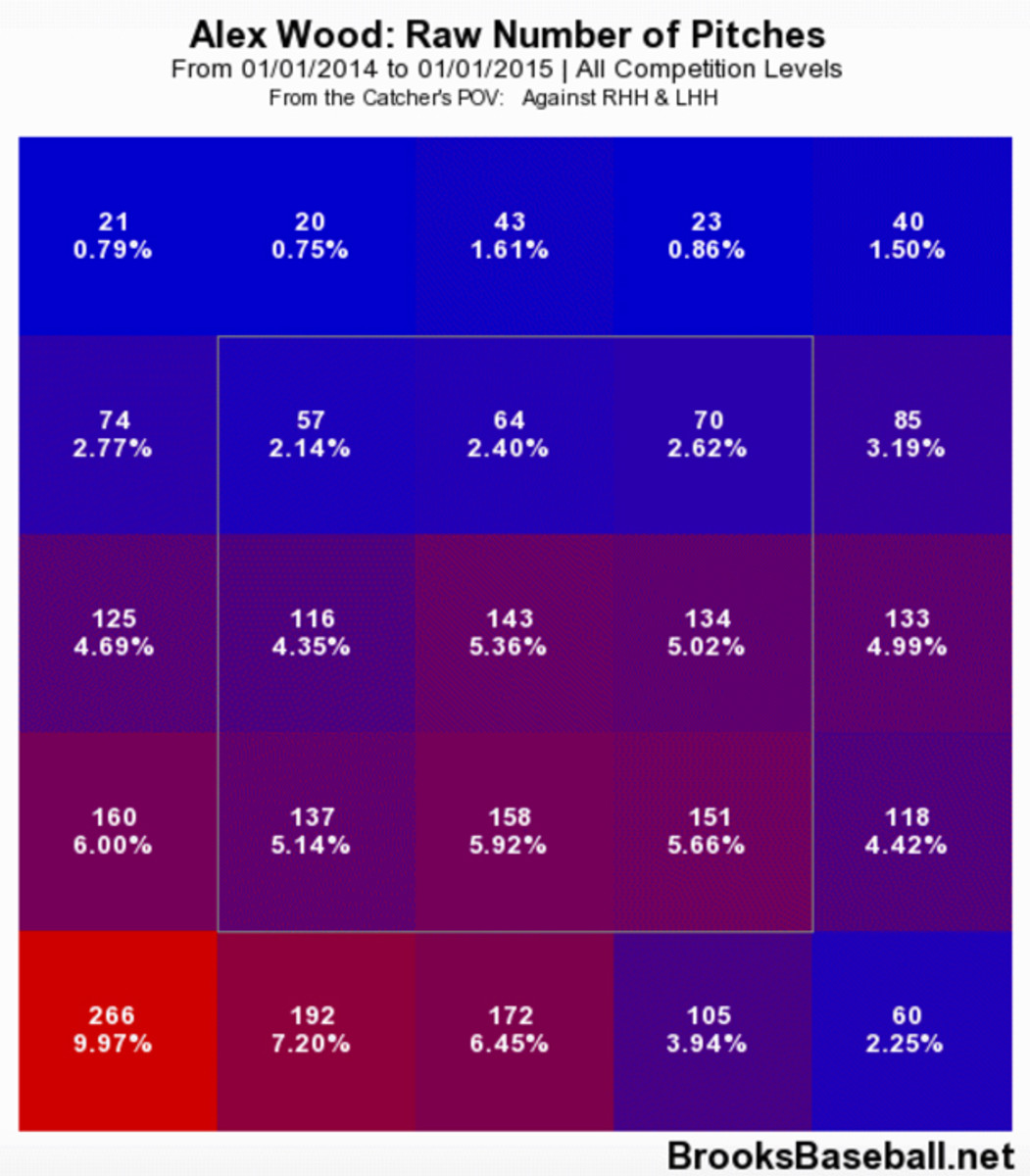
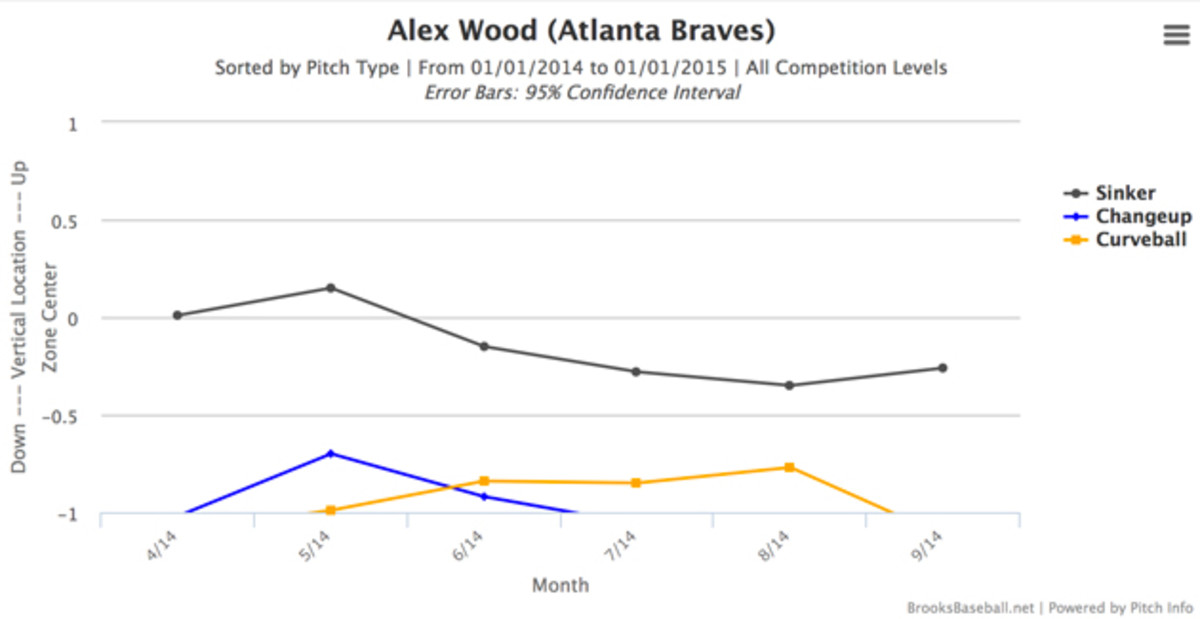
Given that Wood’s fastball isn’t special, he’s going to get in trouble if he consistently leaves the ball up in the zone. Major leaguers will crush 89-90 at the letters, and any pitcher struggles if his changeup floats to the top of the zone. Wood was masterful at beating the bottom of the zone last year, with a whopping 57% of his pitches in those final two rows. His change and curve always had an average location exactly where he wanted it, and the fastball, more often than not, was down below the belt. Wood understands where he needs to throw if he’s going to succeed, and he set up shop there last season.
Now that we’ve established Wood’s command and control bona fides, let’s get back to that knuckle-curve. Wood pitched well in 2013 when he had a chance to start as a result of Tim Hudson’s injury, but he relied too heavily on his fastball-changeup combo. He threw the knuckle-curve just about 13% of the time, with the fastball and changeup eating up the rest of his offerings. Clearly, he would have to develop the pitch further if he was going to be an effective major league starting pitcher.
Did he do that last season? I don’t know, let’s ask Adrian Beltre.
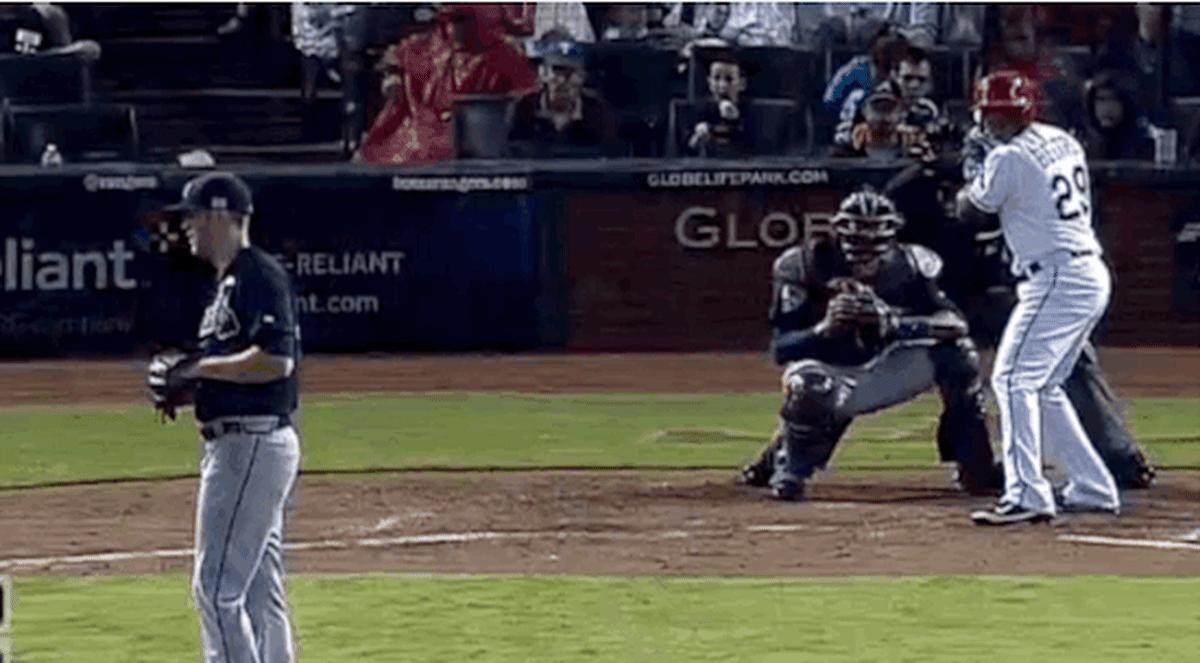
Or Bryce Harper.
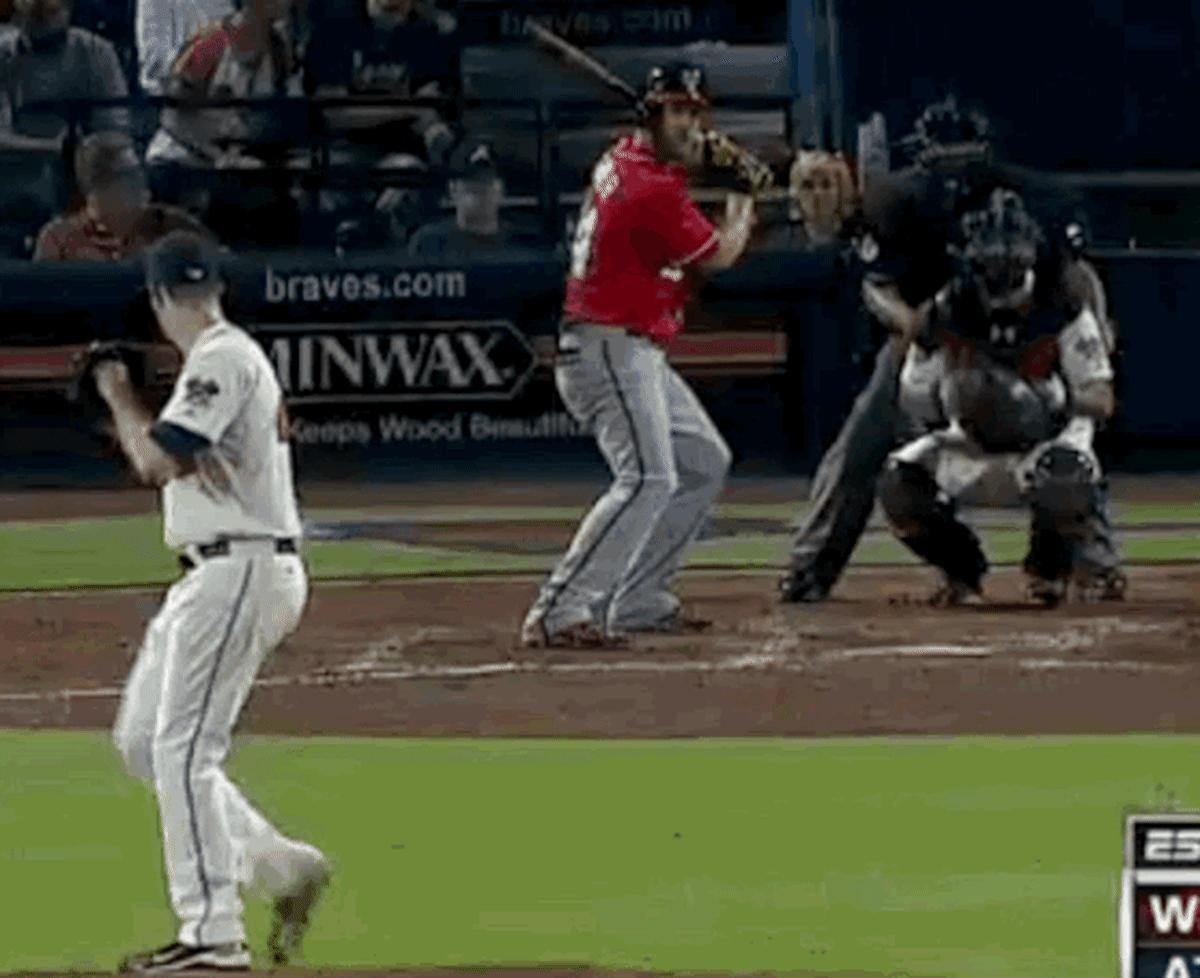
Or Adrian Gonzalez.
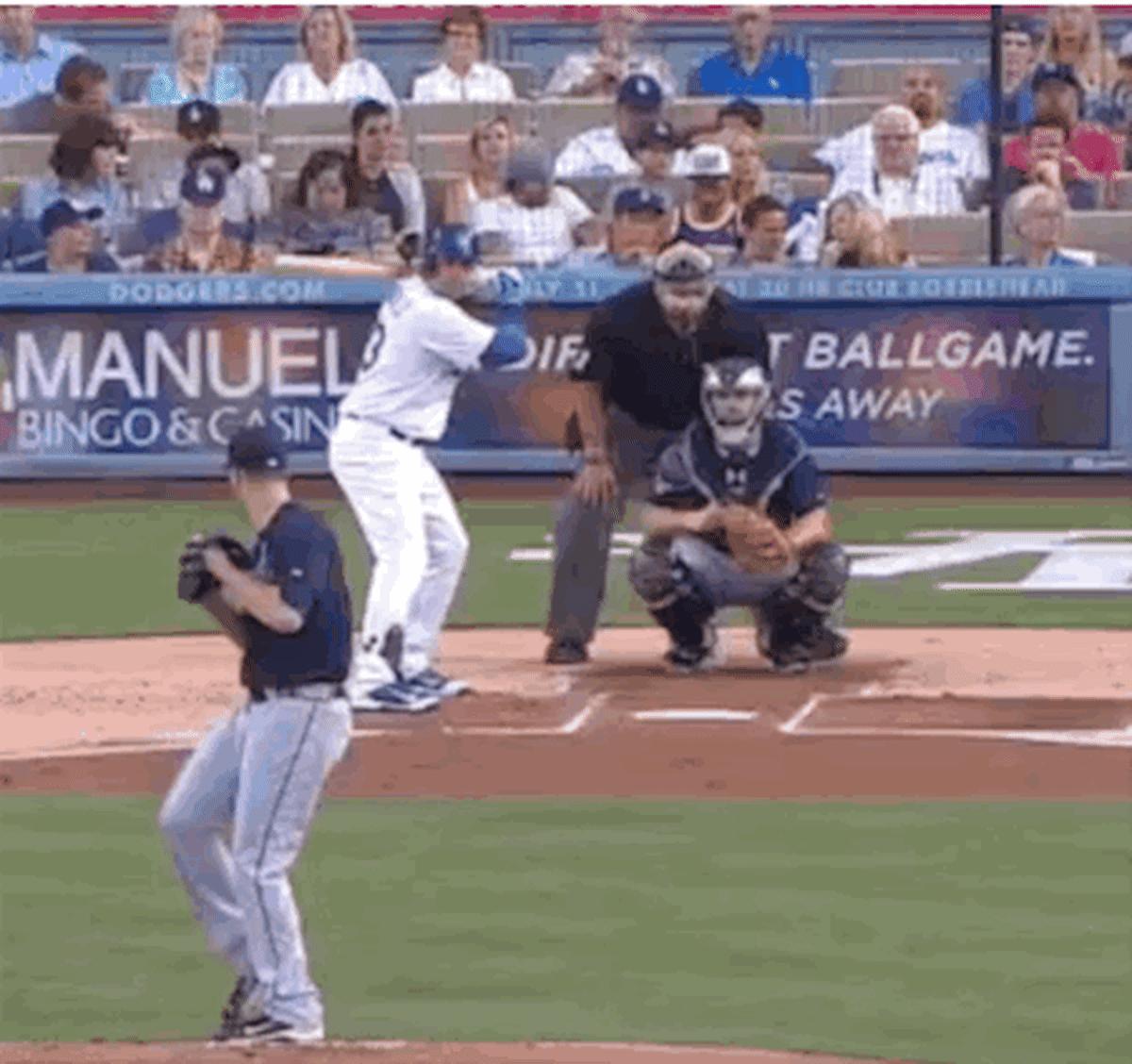
Did you see how bad both Harper and Gonzalez looked flailing at that curve? They weren’t alone. Lefties hit just .180 with a .213 slugging percentage and .033 isolated slugging against Wood’s curve last year. Righties didn’t fare much better, also hitting .180 with a .260 SLG and .080 ISO.
Wood’s average draft position of 104.44 ranks him 24th among starting pitchers, just behind Tyson Ross and James Shields, and ahead of Hisashi Iwakuma and Jake Arrieta. Entering his age-24 season, Wood still has room to grow and should take more steps forward in his development this season. Fantasy owners will be more than happy if they nab him at his current price.
